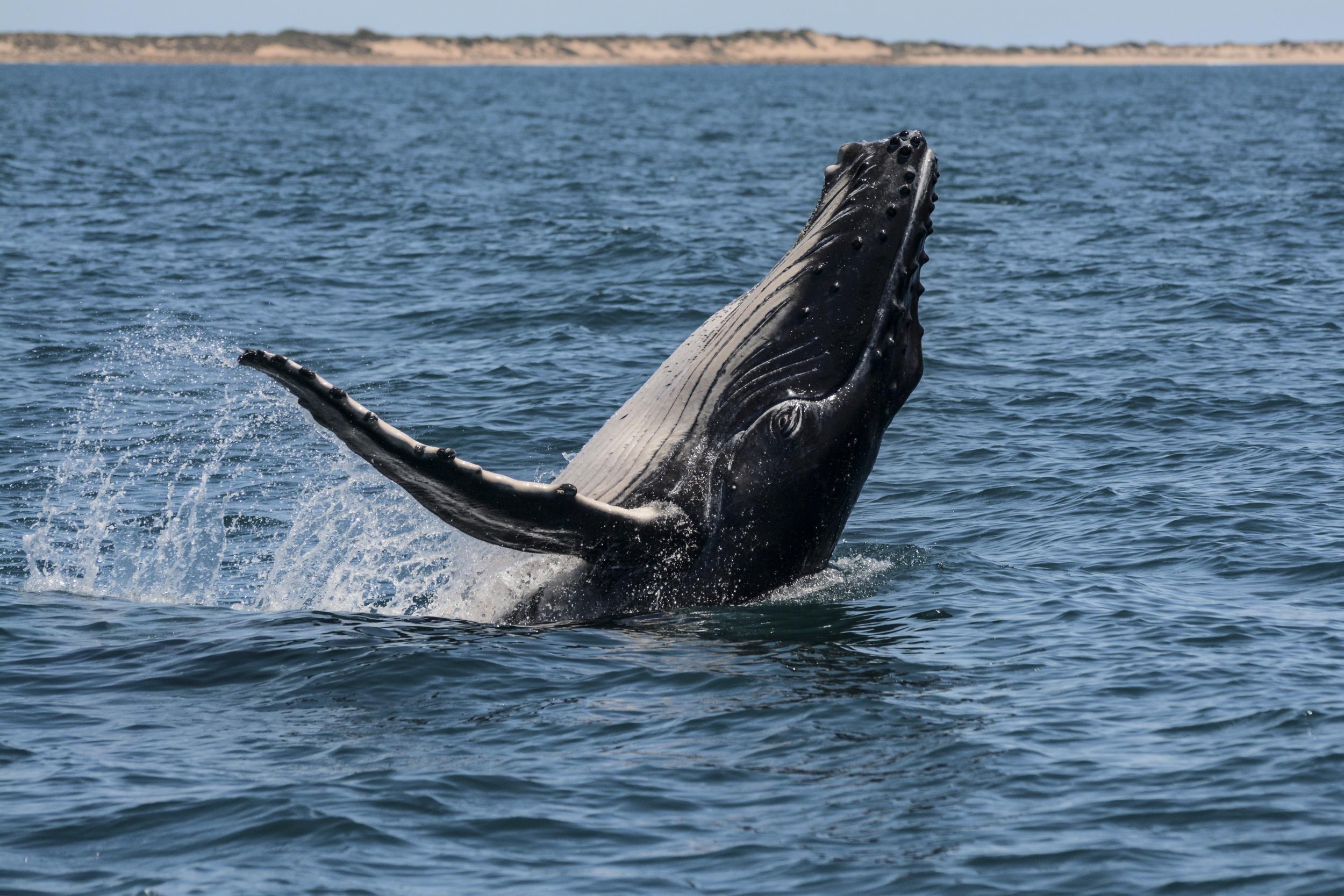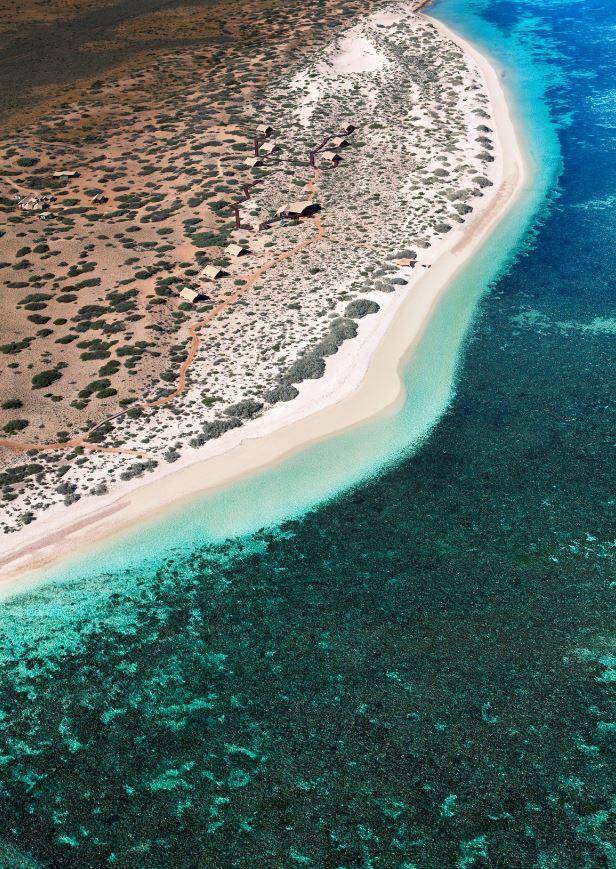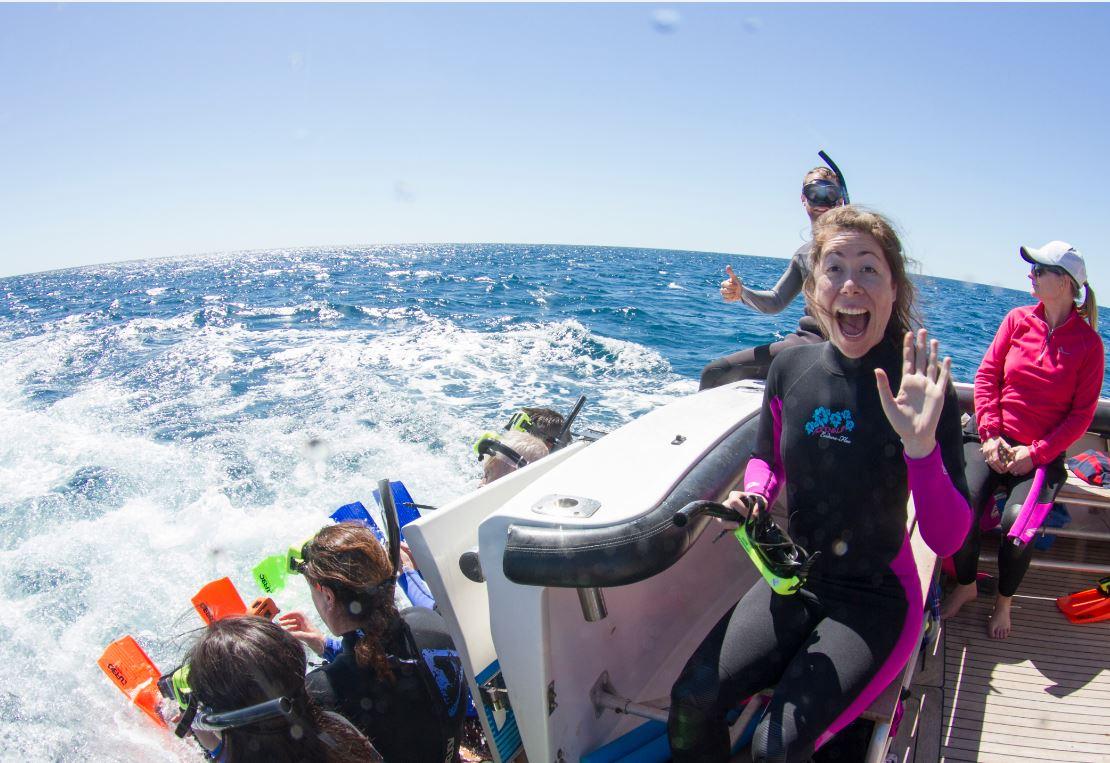Swimming with humpback whales in Western Australia: The ethical way to get up close to nature's giants
A new experience at Ningaloo Reef lets just five visitors at a time share the water with 'humpies'

Your support helps us to tell the story
From reproductive rights to climate change to Big Tech, The Independent is on the ground when the story is developing. Whether it's investigating the financials of Elon Musk's pro-Trump PAC or producing our latest documentary, 'The A Word', which shines a light on the American women fighting for reproductive rights, we know how important it is to parse out the facts from the messaging.
At such a critical moment in US history, we need reporters on the ground. Your donation allows us to keep sending journalists to speak to both sides of the story.
The Independent is trusted by Americans across the entire political spectrum. And unlike many other quality news outlets, we choose not to lock Americans out of our reporting and analysis with paywalls. We believe quality journalism should be available to everyone, paid for by those who can afford it.
Your support makes all the difference.“Just sign your life away here,” grins Murray “then we’ll get going.” He hands me a clipboard loaded with disclaimer forms, grabs the helm and powers us out of Ningaloo Reef, Western Australia, in search of giants.
Watching whales from the bow of a boat can be thrilling, but it’s akin to seeing seals on the shore – you’re not witnessing what they can really do. Best to meet them on their own turf and get in the water.

Of all whale species, humpbacks are the most approachable, but chances to share the waves with them are rare. Locations can be counted on one hand: Tonga (southeast of Fiji), the Dominican Republic, and Queensland, Australia. However, a new trial offering swimmers the chance to snorkel with “humpies” off the western Exmouth peninsula opened this year and I was among the first to try it.
Suited and booted in our snorkels and fins, we wait for the call. “Group one: go, go go!” We slip off the back of the boat into the deep water and wiggle after our guide, Julian. I push my head below the waves. Zooplankton stream like snow against my mask. And then I hear it. The crooning song of a male. The base notes make my heart hum. But we can’t see him, so we lift our heads and look enquiringly at Julian.

“He must be resting on a sandbank some way off,” he shrugs. We try to follow the music, but the whale swims away before we can approach.
Up until now, Ningaloo Reef was best known for encounters with whale sharks, mammoth spotted filter-feeding fish that cruise along the surface. “They’re cool, but predictable,” reasons Nat, our onboard marine biologist, who has one tattooed on her left foot. “Humpies fight, breach and change direction,” she enthuses, eyes wide. “The experience is more interactive.”
Just seconds later a huge female, as big as a train carriage, corkscrews through the surface 30 metres away and flops on to her back, sending up an almighty fountain of water. “Woohoo!” we shout, collectively.

“But why now?” I ask. “It’s not as if humpbacks have just started coming here.” They’ve always migrated between the food-rich Southern Ocean and warm northern breeding grounds.
“The truth? Revenue from oil and gas mining is in decline, and humpback snorkeling could compensate for the monetary losses,” Nat admits. “At first I was against it, but if they don’t want to interact they won’t. They can outmaneouvre us like that,” she says, snapping her fingers.
To protect the humpback whales, the Department of Parks and Wildlife has introduced much stricter interaction rules compared to those for whale sharks. Just five swimmers (rather than 10) are allowed in the water; they must keep a distance of 30 metres (instead of three metres); and never are they allowed to swim with mothers and calves. Furthermore, skippers can only make three attempts to get swimmers in the sea with the same pod.

“We put the wellbeing of the creatures above everything else. It’s different than other places around the world,” Nat says. Eleven operators have been given a trial licence, with just three offering exclusive humpback tours. Following them is an independent research vessel with biologists onboard monitoring the behavior of the whales – breath rate and tail slaps for example – to determine if tourism is having a detrimental affect on their migration.
At 10.30am the spotter plane goes up – a black bird against the blue sky. The voice of Jacob, the pilot, crackles over the radio, reporting that all the pods in our vicinity have calves. So we head north, a shimmer of beach on our right. We pass a calf trying to impress its mum with a few fin slaps, its small arm pathetically patting the water.
However, the wind picks up so we return to shore and spend the night at Sal Salis – a handful of luxury tents lined up along the dunes of Cape Range National Park. Wallaroos and gaggles of blushing galahs peer at us from behind the scrub as we pass.

Unzipping my tent the next morning, I see splashes on the blue horizon. Humpbacks are breaching and I watch as I munch my muesli. It’s a good sign. We drive to the dock, board another boat and cruise out over the back of the reef, scanning the surface for signs of life. Jacob’s voice sputters over the radio sounding fretful as he can only see females and calves.
By late afternoon we’re beginning to lose hope when, suddenly, the call goes up: “Whales behind us! Group one go!” As we jump, dead ahead are five bachelors, their rounded hulks barreling straight towards us. We scramble to pull on our masks and slip quietly into the sea. I point my face downwards and see one cruising thirty metres below, his white barnacled belly half-turned towards us. He’s so submarine-like I catch myself listening out for sonar beeps. Like grey suited commuters they rush past us, homeward bound, and indifferent to us.

Interactions in other locations may be longer, but those at Ningaloo are sweeter for not being tainted with tricks and harassment. No matter how fleeting, what can be more thrilling than looking a real-life leviathan in the eye?
Travel Essentials
Getting there
Emirates offers flights from Gatwick to Perth via Dubai from £935 in economy.
Visiting and staying there
A three-night humpback whale swim package from Sal Salis costs from $2,800pp (£1,655) upwards and includes three nights’ accommodation in a wilderness tent, all meals and beverages, daily guided wilderness activities, national park fees and a full day of adventure swimming with humpback whales (August to October) with Live Ningaloo.
More information
Join our commenting forum
Join thought-provoking conversations, follow other Independent readers and see their replies
Comments